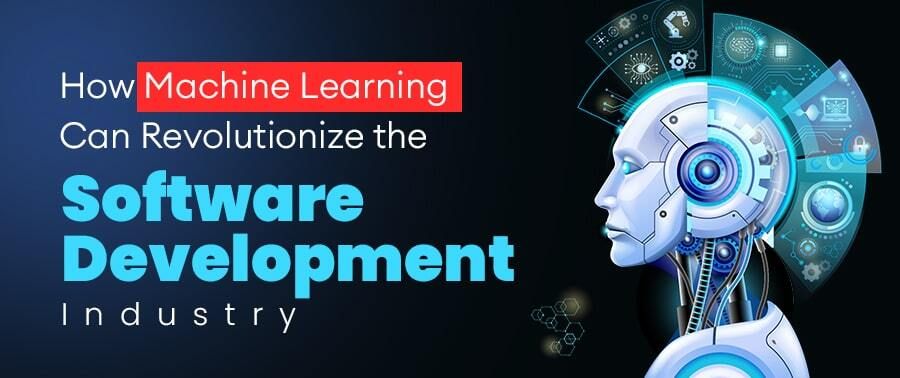In 2023, software is anywhere and everywhere you look around. From your laptops to your health-related devices, every bit of engineering marvel runs on software. In the recent past, this industry received a huge boost with the integration of Machine Learning (ML) technology.
The addition of ML to the software development industry has brought about some profound changes and advancements. Now if you are a software developer and aren’t yet making the most out of ML, it is high time you realize how powerful this tool really is.
As you scroll down, you will get to learn about,
How ML is impacting software development
What are the unsung advantages of integrating ML into a software
What should you do about all this
So, let’s dive into the crux of it!
How ML is Impacting Software Development?
The integration of ML into the software development ecosystem allows developers to generate much more intelligent, efficient, and adaptable applications. But how? To better understand this, let us first explore how an ML functions.
In the simplest of terms, Machine Learning (ML) is a system of algorithms that allow a computer to learn from its previous experiences. This process of learning from experiences is automatic in nature. The integration of ML in software development makes the software more useful for us humans.
For instance, a voice recognition feature on a mobile phone gets better and better as it is tested in a variety of environments. As the software is tested in different simulations, the ML embedded in it, allows it to learn from the data gathered and helps it to become better in understanding voice commands in different settings.
Let us now scale this, and understand the other ways how ML integration is impacting software development.
In general, ML algorithms are adept at analyzing patterns, learning from past experiences, and making data-driven predictions. This helps the software in improving and optimizing its performance levels, which further allows it to cater to the needs of the users in a better manner.
Software testing and debugging is one of the crucial areas where ML has shown its true potential. Over the years, software testing has earned the title of being a time-consuming and labor-intensive process, but now with the introduction of ML, it has been simplified exponentially.
ML models implement automated testing which considerably reduces the time required in the entire process and at the same time, increases the accuracy and reliability of the debugging process. The ML algorithms are great at predicting potential defects which in turn decrease the likelihood of bugs in the software, resulting in robust software.
Do you know, the recommendation system that you seem to love on your favorite e-commerce platform also employs the integration of ML and software? Let us give you a better knowledge of how this takes place. ML has turned mere software into self-learning software.
This allows applications to adapt their functionalities on the basis of user interactions and feedback from the time it has been running. With time passing by, the software is better able to understand the preferences of the user and provide personalized suggestions, accordingly.
The benefit of this feature ultimately is, it improves user experience, and thus boosts customer engagement, ultimately leading to better sales.
Talking about user experience and user interface, ML has also shown its potential by giving rise to Natural Language Processing (NLP) and speech recognition technology. Both these advancements have revolutionized the way humans interact with computer systems. The applications nowadays are more intuitive and user-friendly owing to these features.
Our favorite voice-controlled assistants, namely, Alexa and Siri showcase the smooth integration of ML in software in everyday life. This integration allows us to interact with applications through natural language commands.
These are arguably the most well-known and primary features of ML and software integration. We will now show you some of the relatively lesser-known advantages of this combination.
Key Advantages of ML and Software Integration
Data Insights –
Machine Learning algorithms have the ability to analyze massive datasets to extract some valuable insights and patterns. These insights later help developers in making informed decisions while developing software. The data-driven approach is crucial for developers in order to enhance the overall quality of the software.
ML here helps software even before it has been integrated into its functioning!
Cost Savings –
Earlier we learned about how ML can carry out software testing and debugging on its own, which traditionally is pretty time-consuming and labor-intensive. An added advantage of this shift is, with a reduced need for manual labor, you can save a fortune on your expenses!
Predictive Maintenance –
You have the option to take advantage of how ML can turn software into ‘self-learning’ software. The predictive maintenance capabilities of ML when integrated with software can help you schedule downtime in advance, leading to lesser downtime in general, and significantly decreased operational business costs.
Real-time Decision Making –
Applications or software that have ML embedded in them, can make real-time decisions owing to data analysis and learning. This feature has proven to be crucial in industries that are highly time-sensitive, such as healthcare and finance. In these industries, the ability to make quick and accurate decisions is paramount.
Improved Security –
ML algorithms are excellent when it comes to detecting and preventing cyber threats by analyzing patterns of malicious activities. If ML is integrated into cybersecurity software, it can enhance the ability to identify and mitigate any or all potential security breaches.
Replacement of Code –
Relieving all developers, ML can now make coding significantly more efficient. ML possesses the ability to automate the initial brick-laying process of software development. Another significant advantage here is, the code need not be rewritten every time there is a change in the programming language.
Instead, the neural network equipped with the code can undergo training to acquire information about the newly released coding programs.
Final Word
To conclude, as you have observed and learned throughout the piece above, Machine Learning has been a true game-changer in the field of Software Development. The benefits and advantages it offers, have made the work of software development dramatically easier for developers.
A capable developer can harness the true power of ML and software to enhance performance, automate tasks, and provide personalized user experiences. At the same time, the predictive capability of ML enables businesses to make data-driven decisions, which further allows these businesses to stay ahead of the technology curve.
With AI and ML making giants stride, humanity is perhaps still to unravel the true potential of these two technologies but even at the current state, integrating these two in day-to-day business operations can provide great benefits.
So, if you are a data-driven modern-day business house looking to leverage technological advancements into your workflow, now is the time!




Top comments (0)